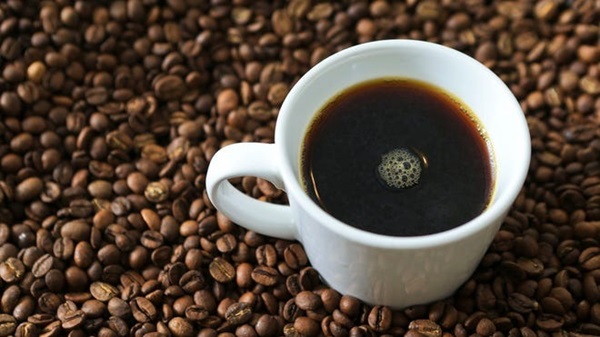National Coffee Break Day is celebrated on January 20 every year. The showcases the significance of a coffee break during work hours. Getting drained after a few hours of work is all natural no matter how intelligent or hard-working you are. So, how can you boost your energy? Of course, you grab your favourite cup of coffee. A coffee break is most needed for every workaholic which they can’t live without. Similarly, it is also the best way to boost your energy. So it is significant to celebrate National Coffee Day and recognize the benefits it brings to employees across the United States.
History of National Coffee Break Day
A coffee break is an activity in which a person takes a short break for rest and refreshments. The importance of coffee breaks has developed over time and has become a crucial aspect of the workplace.
This is because working hours and rules were fairly strict in the 1980s. Similarly, during the 1880s, Americans often take a break from work and get refreshed with a cup of coffee. Throughout this time they chat with coworkers about personal difficulties, work-related problems, and anything that was on the employee’s mind.

Moreover, in 1900s, when the eight-hour-long workday system was applied by factories, a coffee break became more crucial. Workers were also spotted refilling their coffee mugs during shifts to give themselves a boost of energy.
By the 20th century, coffee breaks had become so common that city streets were filled with coffee stands ready to serve tired workers with freshly brewed cups of coffee.
Are you still wondering why a coffee break is so important? National Coffee Association says coffee is rich in antioxidants that have various health benefits. On the other hand, a ‘coffee break’ aids workers to relax, become more refreshed and productive and stay motivated.
Experts even suggest that taking a coffee break is crucial for maintaining business ties. It also boosts performance and enhances cognitive efficiency.
Also read, National Bootlegger’s Day – January 17, 2025
Timeline of National Coffee Break Day
| 1900 (Drink Up) | Coffee breaks become an official employee benefit. |
| 1952 (Get A Break) | The Pan-American Coffee Bureau launches an ad that coins the term ‘coffee break.’ |
| 1959 (Charge Yourself) | “The Atlanta Constitution” publishes the article ‘Coffee Break Is More Than Goofing Off.’ |
| 2001 (The Final Word) | The B.B.C. publishes an article where it quotes research on the value of providing free tea and coffee to workers. |
5 Different Types Of Coffee You Must Try
- Arabica: Arabica is one of the most popular and widely consumed coffee beans. It is a popular choice of people because of its smooth, nuanced flavours and pleasant acidity. It is mostly grown at higher altitudes in regions such as Latin America, Africa, and Asia. Arabica beans offer a diverse range of flavour profiles, from fruity and floral to chocolaty and nutty. According to research, these beans have a low caffeine profile of 0.8% to 1.4%. It is beneficial for people averse to caffeine.
- Robusta: Robusta beans offer bold, strong flavour and higher caffeine content compared to Arabica beans. These beans are usually used in espresso blends to impart a rich crema and a strong, earthy taste. Robusta is grown at lower altitudes. It is mostly found in regions like Africa and Southeast Asia. We add 2% of Robusta in our coffee to add a rich bold flavour.
- Liberica: Liberica beans provide a distinctively fruity and floral flavour profile with hints of woody and smoky notes. It was originated in West Africa and characterized by its larger size and asymmetrical shape. This makes them a unique addition to any coffee aficionado’s collection.
- Excelsa: Excelsa was formerly classified as a variety of Liberica. Since then it has been recognized as a distinct species. These beans are best known for their complex flavour profile, which often features fruity, spicy, and tart notes. Primarily, Excleasa beans are grown in Southeast Asia and are often used to enhance the depth and complexity of blends.
- Typica: Typica is considered one of the oldest cultivated varieties of coffee. Typica beans are best known for their delicate flavour and mild acidity. This bean originated from Yemen and has a smooth, well-balanced profile with subtle floral and fruity notes. Though these beans are less grown than Arabica and Robusta, it is highly valued by coffee connoisseurs for their quality and consistency.
Five Fun Facts About Taking a Coffee Break
- Coffee Inspires Invention: The world’s first webcam was invented in the early ’90s with a sole purpose: to check if the coffee pot was full. Scientists at Cambridge University were tired of walking to the coffee pot only to find it empty, so they set up a camera to track it
- The World’s Most Expensive Coffee: Kopi luwak is the most expensive coffee with a price is more than $600 per pound. This unique coffee is made from coffee cherries that have been consumed and excreted by civets giving it a distinctive flavor profile to the coffee.
- Health Benefits: Consuming moderate coffee which is about three to four cups per day, has been associated with several health benefits, such as a reduced risk of cardiovascular disease and a longer lifespan.
- Coffee Boosts Productivity: According to a 2010 study, caffeine aids you feel more alert, thinking, making good decisions, focusing, and solving complex problems. Similarly, it also improved short-term memory and athletic ability. In short, coffee gives you energizes you in a short time.
- Coffee is a Fruit: Many people think coffee beans are real beans, But they are the seeds of coffee cherries which are berry-like fruits produced by the coffee plant. Each cherry usually contains two seeds.
Conclusion
National Coffee Break Day is celebrated on January 20th. The day emphasizes the vital role of coffee breaks in the workplace. This time gives employees to recharge, increase productivity and foster connections. Coffee has changed from a simple refreshment to a workplace and has offered several benefits, boosting energy and improving cognitive function. Therefore, take a moment today to enjoy your coffee connect with coworkers, and embrace the inspiration that a coffee break can bring.
Frequently Ask Question
When is National Coffee Month?
National Coffee Month is recognized in August.
How many national coffee days are there worldwide?
There are currently 39 countries that celebrate a national coffee day.
What activities can be done on National Coffee Break Day?
Activities include grabbing coffee with coworkers, discussing the benefits of coffee, and introducing new coffee flavors in the workplace.
What are some benefits of taking coffee breaks?
Coffee breaks help workers relax, improve productivity, enhance performance, and increase cognitive efficiency.
What is the history behind coffee breaks?
Coffee breaks became a norm in the 20th century, evolving from a social activity in the 1880s to an essential part of the workday, especially after the adoption of the eight-hour workday.
You may also like to read, Brew a Potion Day – January 19, 2025
